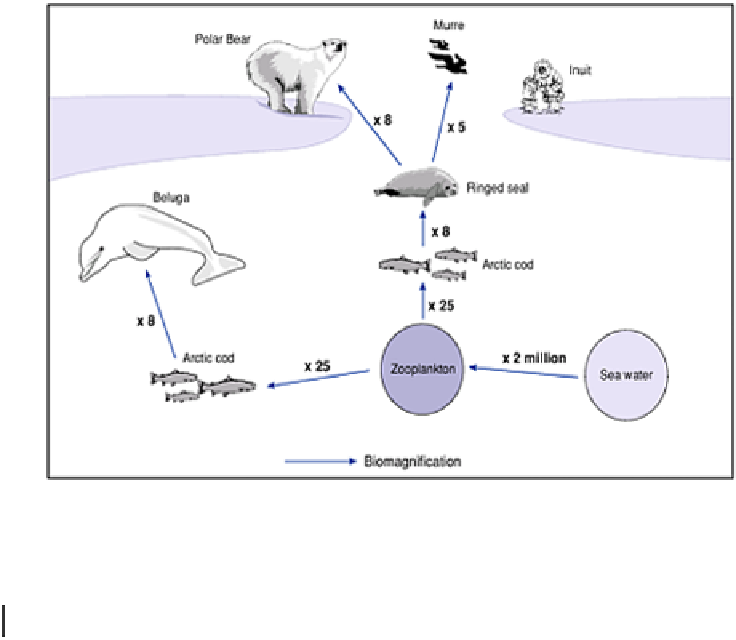Environmental Engineering Reference
In-Depth Information
Figure 24.9
Biomagnification of PCB pollutants in the food
web of the Arctic Ocean. The amount of 'biomagnification'
(multiplication) at each link in the web is indicated.
Table 24.2 Contaminants from distant sources in polar regions
Chlorinated organics
Industrial chemicals PCBs, HCBs, dioxins, furans
Agricultural pesticides HCH, DDT, DDE,
chlordane, toxaphene, organophosphorus
Heavy metals
Mercury, cadmium, lead, arsenic, selenium
Radionuclides
Strontium-90, caesium-137, plutonium-239
Acid precipitation
Oxides of sulphur and nitrogen
Radioactive pollution by radionuclides (long-lived fission products) has come from
inefficient waste disposal, from nuclear weapon testing in the atmosphere between 1952
and 1978, and from accidents like that at the Chernobyl nuclear power station, Ukraine,
in 1986. There has also been pollution from nuclear-powered vessels (mostly submarines
and ice-breakers), and possibly from the secret dumping of nuclear waste in Arctic
waters. Average levels of radioactivity and annual fall-out have decreased steadily since
the ban on weapon testing, but there was a major input of caesium-137 in Scandinavia
after the Chernobyl nuclear accident. Radionuclides are absorbed by lichens, which are
eaten by reindeer (or caribou in North America). Again, native people living off the meat
and milk of the herds are very vulnerable. An additional threat has come from the





